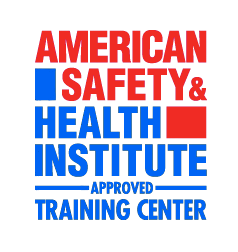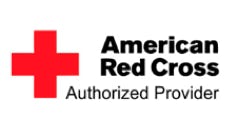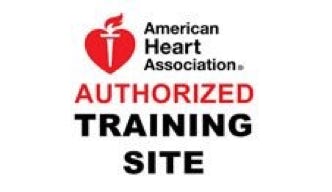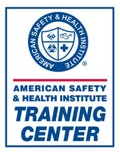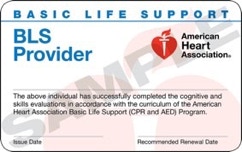EXPOSURE CONTROL PLAN TEMPLATE (University
of Alabama)
Exposure Control
Template in MS Word
MODEL EXPOSURE
CONTROL PLAN (OSHA)
The Model Exposure Control Plan is intended to serve employers as an
example exposure control plan which is required by the Bloodborne Pathogens Standard. A central component of
the requirements of the standard is the development of an exposure control plan (ECP).
The intent of this model is to provide small employers with an easy-to-use format for
developing a written exposure control plan. Each employer will need to adjust or adapt the model for their
specific use.
The information contained in this publication is not considered a substitute for the OSH Act
or any provisions of OSHA standards. It provides general guidance on a particular standard-related topic but
should not be considered a definitive interpretation for compliance with OSHA requirements. The reader should
consult the OSHA standard in its entirety for specific compliance requirements.
POLICY
The (Facility Name) is committed to providing a safe and healthful work environment for our
entire staff. In pursuit of this endeavor, the following exposure control plan (ECP) is provided to eliminate or
minimize occupational exposure to bloodborne pathogens in accordance with OSHA standard 29 CFR 1910.1030,
"Occupational Exposure to Bloodborne Pathogens."
The ECP is a key document to assist our firm in implementing and ensuring compliance with the
standard, thereby protecting our employees. This ECP includes:
* Determination of employee exposure
* Implementation of various methods of exposure control, including:
Universal precautions
Engineering and work practice controls Personal protective equipment Housekeeping
* Hepatitis B vaccination
* Post-exposure evaluation and follow-up
* Communication of hazards to employees and training
* Recordkeeping
* Procedures for evaluating circumstances surrounding an exposure incident
D-1
The methods of implementation of these elements of the standard are discussed in the
subsequent pages of this ECP.
D-2
PROGRAM ADMINISTRATION
* _(Name of responsible person or department)_______________________ is (are) responsible for
the implementation of the ECP. _(Name of responsible person or department)_______________________ will maintain,
review, and update the ECP at least annually, and whenever necessary to include new or modified tasks and
procedures. Contact location/phone number:____________________________
* Those employees who are determined to have occupational exposure to blood or other
potentially infectious materials (OPIM) must comply with the procedures and work practices outlined in this ECP.
* ___(Name of responsible person or department)_____________________ will maintain and
provide all necessary personal protective equipment (PPE), engineering controls (e.g., sharps containers),
labels, and red bags as required by the standard. __(Name of responsible person or
department______________________ will ensure that adequate supplies of the aforementioned equipment are
available in the appropriate sizes. Contact location/phone number:_________________________________
* _(Name of responsible person or department)_______________________ will be responsible for
ensuring that all medical actions required are performed and that appropriate employee health and OSHA records
are maintained. Contact location/phone number:_________________________________
* _(Name of responsible person or department)_______________________ will be responsible for
training, documentation of training, and making the written ECP available to employees, OSHA, and NIOSH
representatives.
Contact location/phone number:_________________________________
EMPLOYEE EXPOSURE DETERMINATION
The following is a list of all job classifications at our establishment in which all
employees have
occupational exposure: JOB TITLE
(Example: Phlebotomists)
___________________________
DEPARTMENT/LOCATION
(Clinical Lab)
_________________________________
D-3
The following is a list of job classifications in which some employees at our establishment
have occupational exposure. Included is a list of tasks and procedures, or groups of closely related tasks and
procedures, in which occupational exposure may occur for these individuals:
JOB TITLE DEPARTMENT/LOCATION TASK/PROCEDURE
(Example: Housekeeper Environmental Services Handling Regulated Waste)
Part-time, temporary, contract and per diem employees are covered by the standard. How the
provisions of the standard will be met for these employees should be described in the ECP.
METHODS OF IMPLEMENTATION AND CONTROL
Universal Precautions
All employees will utilize universal precautions.
Exposure Control Plan
Employees covered by the bloodborne pathogens standard receive an explanation of this ECP
during their initial training session. It will also be reviewed in their annual refresher training. All
employees have an opportunity to review this plan at any time during their work shifts by contacting _(Name of
responsible person or department)__________. If requested, we will provide an employee with a copy of the ECP
free of charge and within 15 days of the request.
___(Name of responsible person or department)_________________ is responsible for reviewing
and updating the ECP annually or more frequently if necessary to reflect any new or modified tasks and
procedures which affect occupational exposure and to reflect new or revised employee positions with occupational
exposure.
Engineering Controls and Work Practices
Engineering controls and work practice controls will be used to prevent or minimize exposure
to bloodborne pathogens. The specific engineering controls and work practice controls used are listed below:
* _(For example: non-glass capillary tubes, SESIPs, needleless systems) *
__________________________________________________________ *
__________________________________________________________
D-4
Sharps disposal containers are inspected and maintained or replaced by ___(Name of
responsible person or department)_____________________ every ___(list frequency______________ or whenever
necessary to prevent overfilling.
This facility identifies the need for changes in engineering control and work practices
through (Examples: Review of OSHA records, employee interviews, committee activities, etc.)
We evaluate new procedures or new products regularly by (Describe the process, literature
reviewed, supplier info, products considered)
____________________________________________________ _____________________
Both front line workers and management officials are involved in this process: (Describe
how employees will be involved)
(Name of responsible person or department) will ensure
effective implementation of these recommendations. Personal Protective Equipment (PPE)
PPE is provided to our employees at no cost to them. Training is provided by __(Name of
responsible person or department)______________________ in the use of the appropriate PPE for the tasks or
procedures employees will perform.
The types of PPE available to employees are as follows:
__(Ex., gloves, eye protection, etc.)_____________________________________
PPE is located ____(List location)_______________________________ and may be obtained
through_(Name of responsible person or department)_____
(Specify how employees are to obtain PPE, and who is responsible for ensuring that it is
available.)
All employees using PPE must observe the following precautions:
* Wash hands immediately or as soon as feasible after removal of gloves or other
PPE.
* Remove PPE after it becomes contaminated, and before leaving the work area.
* Used PPE may be disposed of in _____________(List appropriate containers for
storage, laundering, decontamination, or disposal.)
* Wear appropriate gloves when it can be reasonably anticipated that there may be
hand contact with blood or OPIM, and when handling or touching contaminated
D-5
Housekeeping
items or surfaces; replace gloves if torn, punctured, contaminated, or if their
ability to function as a barrier is compromised.
* Utility gloves may be decontaminated for reuse if their integrity is not
compromised; discard utility gloves if they show signs of cracking, peeling,
tearing, puncturing, or deterioration.
* Never wash or decontaminate disposable gloves for reuse.
* Wear appropriate face and eye protection when splashes, sprays, spatters, or
droplets of blood or OPIM pose a hazard to the eye, nose, or mouth.
* Remove immediately or as soon as feasible any garment contaminated by blood or
OPIM, in such a way as to avoid contact with the outer surface.
The procedure for handling used PPE is as follows: (may refer to specific agency
procedure by title or number and last date of review)
____________________________________________________________
____________________________________________________________
(For example, how and where to decontaminate face shields, eye protection, resuscitation
equipment)
Regulated waste is placed in containers which are closable, constructed to contain all
contents and prevent leakage, appropriately labeled or color-coded (see Labels), and closed prior to removal to
prevent spillage or protrusion of contents during handling.
The procedure for handling sharps disposal containers is: (may refer to specific agency
procedure by title or number and last date of review)
________________________________________________________________________
________________________________________________________________________
The procedure for handling other regulated waste is: (may refer to specific agency procedure
by title or number and last date of review)
________________________________________________________________________
________________________________________________________________________
Contaminated sharps are discarded immediately or as soon as possible in containers that are
closable, puncture-resistant, leakproof on sides and bottoms, and labeled or color- coded appropriately. Sharps
disposal containers are available at __________(must be easily accessible and as close as feasible to the
immediate area where sharps are used).
D-6
Bins and pails (e.g., wash or emesis basins) are cleaned and decontaminated as soon as
feasible after visible contamination.
Broken glassware which may be contaminated is picked up using mechanical means, such as a
brush and dust pan.
Laundry
The following contaminated articles will be laundered by this company:
________________________ ________________________ ________________________ ________________________
Laundering will be performed by _(Name of responsible person or department)
_______________________ at (time and/or location) .
The following laundering requirements must be met:
* handle contaminated laundry as little as possible, with minimal agitation
* place wet contaminated laundry in leak-proof, labeled or color-coded containers before
transport. Use (red bags or bags marked with biohazard symbol)___________________ for this purpose.
* wear the following PPE when handling and/or sorting contaminated laundry: (List appropriate
PPE)______________________
Labels
The following labeling method(s) is used in this facility:
EQUIPMENT TO BE LABELED LABEL TYPE (size, color, etc.)
(e.g., specimens, contaminated laundry, etc.)(_red bag, biohazard label, etc.)
____________________________ ________________________ ____________________________
________________________
__(Name of responsible person or department)______________________ will ensure warning labels
are affixed or red bags are used as required if regulated waste or contaminated equipment is brought into the
facility. Employees are to notify ________________________ if they discover regulated waste containers,
refrigerators containing blood or OPIM, contaminated equipment, etc. without proper labels.
HEPATITIS B VACCINATION
(Name of responsible person or department)________________________ will provide training to
employees on hepatitis B vaccinations, addressing the safety, benefits, efficacy, methods of administration, and
availability.
D-7
The hepatitis B vaccination series is available at no cost after training and within 10 days
of initial assignment to employees identified in the exposure determination section of this plan. Vaccination is
encouraged unless: 1) documentation exists that the employee has previously received the series, 2) antibody
testing reveals that the employee is immune, or 3) medical evaluation shows that vaccination is contraindicated.
However, if an employee chooses to decline vaccination, the employee must sign a declination
form. Employees who decline may request and obtain the vaccination at a later date at no cost. Documentation of
refusal of the vaccination is kept at _______(List location or person responsible for this recordkeeping).
Vaccination will be provided by _(List Health care Professional who is responsible for this
part of the plan) at (location) .
Following the medical evaluation, a copy of the health care professional's Written
Opinion will be obtained and provided to the employee. It will be limited to whether the employee requires the
hepatitis vaccine, and whether the vaccine was administered.
POST-EXPOSURE EVALUATION AND FOLLOW-UP
Should an exposure incident occur, contact ____(Name of responsible person) at the following
number:_____________________________.
An immediately available confidential medical evaluation and follow-up will be conducted by
(Licenced health care professional) . Following the initial first aid (clean the wound, flush eyes or other
mucous membrane, etc.), the following activities will be performed:
Document the routes of exposure and how the exposure occurred.
Identify and document the source individual (unless the employer can establish that
identification is infeasible or prohibited by state or local law).
Obtain consent and make arrangements to have the source individual tested as soon as possible
to determine HIV, HCV, and HBV infectivity; document that the source individual's test results were
conveyed to the employee's health care provider.
If the source individual is already known to be HIV, HCV and/or HBV positive, new testing
need not be performed.
* Assure that the exposed employee is provided with the source individual's test results
and with information about applicable disclosure laws and regulations concerning the identity and infectious
status of the source individual (e.g., laws protecting confidentiality).
* After obtaining consent, collect exposed employee's blood as soon as feasible after
exposure incident, and test blood for HBV and HIV serological status
* If the employee does not give consent for HIV serological testing during collection of
blood for baseline testing, preserve the baseline blood sample for at least 90
D-8
days; if the exposed employee elects to have the baseline sample tested during this waiting
period, perform testing as soon as feasible.
ADMINISTRATION OF POST-EXPOSURE EVALUATION AND FOLLOW-UP
(Name of responsible person or department)________________________ ensures that health care
professional(s) responsible for employee's hepatitis B vaccination and post-exposure evaluation and
follow-up are given a copy of OSHA's bloodborne pathogens standard.
___(Name of responsible person or department)_____________________ ensures that the health
care professional evaluating an employee after an exposure incident receives the following:
* a description of the employee's job duties relevant to the exposure incident
* route(s) of exposure
* circumstances of exposure
* if possible, results of the source individual's blood test
* relevant employee medical records, including vaccination status
__(Name of responsible person or department)_______________________provides the employee with
a copy of the evaluating health care professional's written opinion within 15 days after completion of the
evaluation.
PROCEDURES FOR EVALUATING THE CIRCUMSTANCES SURROUNDING AN EXPOSURE INCIDENT
(Name of responsible person or department)________________________ will review the
circumstances of all exposure incidents to determine:
* engineering controls in use at the time
* work practices followed
* a description of the device being used (including type and brand)
* protective equipment or clothing that was used at the time of the exposure incident
(gloves, eye shields, etc.)
* location of the incident (O.R., E.R., patient room, etc.)
* procedure being performed when the incident occurred
* employee’s training
(Name of Responsible Person) will record all percutaneous injuries from contaminated sharps
in the Sharps Injury Log.
If it is determined that revisions need to be made, __(Responsible person or
department)___________________ will ensure that appropriate changes are made to this ECP. (Changes may include
an evaluation of safer devices, adding employees to the exposure determination list, etc.)
D-9
EMPLOYEE TRAINING
All employees who have occupational exposure to bloodborne pathogens receive training
conducted by (Name of responsible person or department) . (Attach a brief description of their qualifications.)
All employees who have occupational exposure to bloodborne pathogens receive training on the
epidemiology, symptoms, and transmission of bloodborne pathogen diseases. In addition, the training program
covers, at a minimum, the following elements:
* Training materials for
RECORDKEEPING
a copy and explanation of the standard
an explanation of our ECP and how to obtain a copy
an explanation of methods to recognize tasks and other activities that may involve exposure
to blood and OPIM, including what constitutes an exposure incident
an explanation of the use and limitations of engineering controls, work practices, and PPE
an explanation of the types, uses, location, removal, handling, decontamination, and disposal
of PPE
an explanation of the basis for PPE selection
information on the hepatitis B vaccine, including information on its efficacy, safety, method
of administration, the benefits of being vaccinated, and that the vaccine will be offered free of charge
information on the appropriate actions to take and persons to contact in an emergency
involving blood or OPIM
an explanation of the procedure to follow if an exposure incident occurs, including the
method of reporting the incident and the medical follow-up that will be made available
information on the post-exposure evaluation and follow-up that the employer is required to
provide for the employee following an exposure incident
an explanation of the signs and labels and/or color coding required by the standard and used
at this facility
an opportunity for interactive questions and answers with the person conducting the training
session.
this facility are available at ___________________________.
Training Records
Training records are completed for each employee upon completion of training. These documents
will be kept for at least three years at __(Name of responsible person or location of
records)______________________.
D-10
The training records include:
* the dates of the training sessions
* the contents or a summary of the training sessions
* the names and qualifications of persons conducting the training
* the names and job titles of all persons attending the training
sessions
Employee training records are provided upon request to the employee or the employee's
authorized representative within 15 working days. Such requests should be addressed to _____(Name of Responsible
person or department)_ ____________________________________.
Medical Records
Medical records are maintained for each employee with occupational exposure in accordance
with 29 CFR 1910.1020, "Access to Employee Exposure and Medical Records."
(Name of Responsible person or department) is responsible for maintenance of the required
medical records. These confidential records are kept at ____(List location)________________for at least the
duration of employment plus 30 years.
Employee medical records are provided upon request of the employee or to anyone having
written consent of the employee within 15 working days. Such requests should be sent to ____(Name of responsible
person or department and address)______________________
OSHA Recordkeeping
An exposure incident is evaluated to determine if the case meets OSHA’s Recordkeeping
Requirements (29 CFR 1904). This determination and the recording activities are done by _(Name of responsible
person or department)___________.
Sharps Injury Log
In addition to the 1904 Recordkeeping Requirements, all percutaneous injuries from
contaminated sharps are also recorded in the Sharps Injury Log. All incidences must include at least:
- the date of the injury
- the type and brand of the device involved
- the department or work area where the incident occurred -an explanation of how the incident
occurred.
This log is reviewed at least annually as part of the annual evaluation of the program and is
maintained for at least five years following the end of the calendar year that they cover. If
D-11
a copy is requested by anyone, it must have any personal identifiers removed from the
report.
D-12
Brief description of how the incident occurred
[i.e., procedure being done, action being performed (disposal, injection, etc.), body part
injured]
Work Area where
injury occurred
[e.g., Geriatrics, Lab]
Brand Name of Device
Type of Device
(e.g., syringe, suture needle)
Case/
Report
No.
Establishment/Facility Name:
___________________________________________________________________________
Sample Sharps Injury Log Year 2____
Date
29 CFR 1910.1030, OSHA’s Bloodborne Pathogens Standard, in paragraph (h)(5), requires an
employer to establish and maintain a Sharps Injury Log for recording all percutaneous injuries in a facility
occurring from contaminated sharps. The purpose of the Log is to aid in the evaluation of devices being used in
healthcare and other facilities and to identify problem devices or procedures requiring additional attention or
review. This log must be kept in addition to the injury and illness log required by 29 CFR 1904. The Sharps
Injury Log should include all sharps injuries occurring in a calendar year. The log must be retained for five
years following the end of the year to which it relates. The Log must be kept in a manner that preserves the
confidentiality of the affected employee.
D-13
HEPATITIS B VACCINE DECLINATION (MANDATORY)
I understand that due to my occupational exposure to blood or other potentially infectious
materials I may be at risk of acquiring hepatitis B virus (HBV) infection. I have been given the opportunity to
be vaccinated with hepatitis B vaccine, at no charge to myself. However, I decline hepatitis B vaccination at
this time. I understand that by declining this vaccine, I continue to be at risk of acquiring hepatitis B, a
serious disease. If in the future I continue to have occupational exposure to blood or other potentially
infectious materials and I want to be vaccinated with hepatitis B vaccine, I can receive the vaccination series
at no charge to me.
Signed:__(Employee Name)______________________________ Date:________________________
D-14
